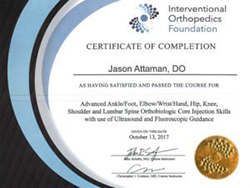Your injury may have happened in a flash, but the pain has compounded and has made daily life much worse. Perhaps the accident or incident keeps playing back in your head and you’re anxious all the time, or you’ve become petrified of driving or other activities, or you panic and snap at other people in an uncharacteristic way. Even if you’ve physically recovered, secondary injuries or conditions may always remind you of the hard fist of misfortune, and may trigger PTSD.
The most common traumatic injury is a car accident, but motorcycle accidents, machinery accidents, workplace injuries, assaults, muggings, robberies, miscarriages, animal attacks, and other traumas can cause PTSD. You haven’t felt like yourself for a while, you miss your pre-trauma daily life, and the PTSD reactions have gotten in the way of your healing and picking up where you left off.
Stellate ganglion block (SGB) is a completely medical procedure that can help break the vicious cycle by calming your reactions to PTSD triggers. If you’re a victim of a traumatic injury, it’s very likely you’ve seen a psychologist or psychiatrist, and that that mode of therapy has helped to one degree. SGB is complementary to therapy, in that it can work in tandem with a therapist’s efforts, or can pick up where they left off.
The stellate ganglion is a bundle of nerves that is located deep in the lower neck. It is located within the cervical sympathetic chain. Sympathetic nerves play a strong role in our fight-or-flight response. When you have PTSD, these nerves malfunction and are constantly sending distress signals to your brain and body. Injecting local anesthetic (numbing medicine) around these nerves is called a stellate ganglion block (SGB). SGB resets these nerves that are chronically in fight-or-flight response. This is similar to rebooting your computer; after the “SGB reboot,” your nerves function normally. Stellate ganglion block (SGB) injections need to be performed under either ultrasound and/or fluoroscopic guidance as there are major blood vessels and organs nearby. The SGB injection is not new and has been used for 100 years to treat painful conditions such as chronic regional pain syndrome (CRPS) of the upper extremity. More recently, SGB is being used to treat PTSD.
Contrary to popular belief, stellate ganglion block is not only a PTSD treatment option for veterans and law-enforcement officers. It’s effective for a wide range of PTSD sufferers, including victims of car accidents and other traumatic injuries.
I (Dr. Jason Attaman) have helped people in all kinds of situations overcome their PTSD. Besides my medical experience, I am in a unique position to help because I understand a few things that may be true of your situation:
- You feel you’ve exhausted your options, between therapy, antidepressants or other medications, and advice from others. Those may have helped, but you’re not out of the woods yet, and your time and patience are stretched thin.
- Simply “taking it easy” or avoiding certain activities in daily life isn’t the solution, or the entire solution. Especially if you’ve physically recovered from your accident, you already feel you need to make up for lost time, and don’t want to drag the recovery out to the point that it’s not really a recovery.
- You worry the treatment may be painful, and you are concerned that you might not be in control.
In my care, you’re always in control, and what you are comfortable with is exactly what we’ll do. With stellate ganglion block I have helped many traumatic-injury victims calm their nerves, move past PTSD, and regain control of their lives. It is fulfilling for me and doubly so for my patients. You can contact my office in Bellevue, WA to discuss your needs and to schedule an appointment.
